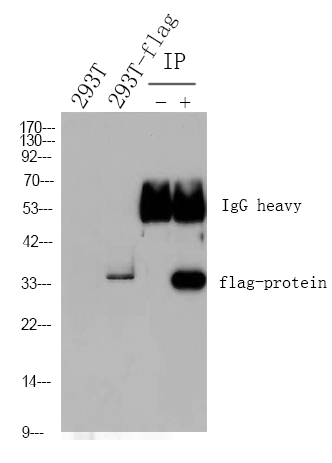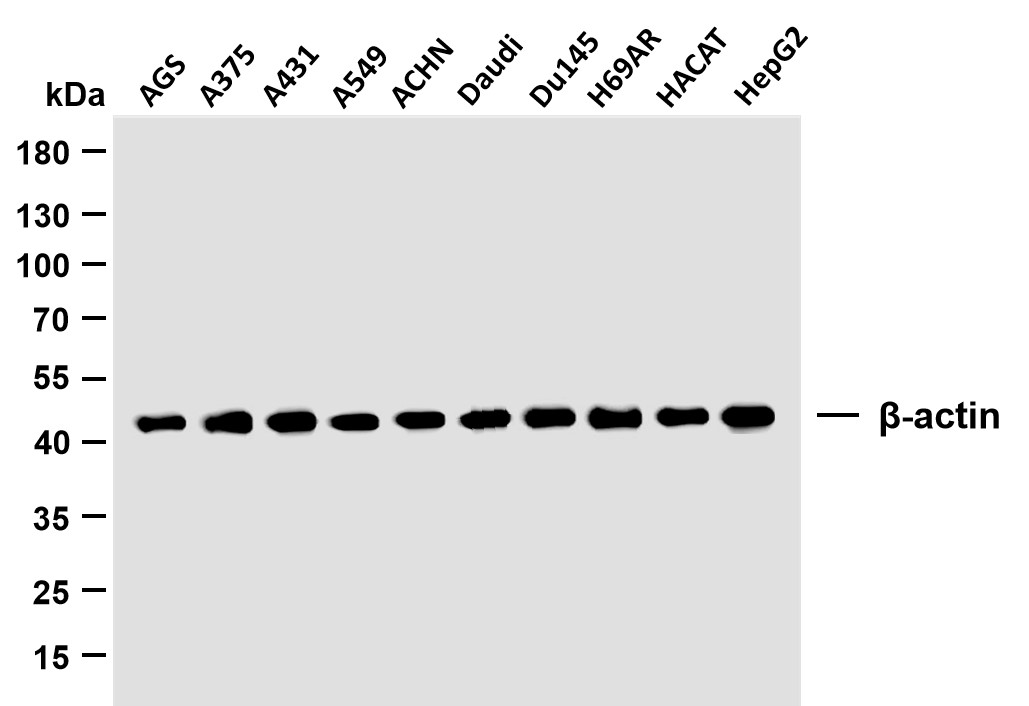
Catalog: YC0176
Size
Price
Status
Qty.
200μL
$450.00
In stock
0
100μL
$280.00
In stock
0
40μL
$150.00
In stock
0
Add to cart


Collected


Collect
Main Information
Target
ITGAV
Host Species
Rabbit
Reactivity
Human, Mouse
Applications
WB, ELISA, IHC
MW
17kD,110kD (Observed)
Conjugate/Modification
Unmodified
Detailed Information
Recommended Dilution Ratio
WB 1:500-2000; IHC 1:50-300; ELISA 1:2000-20000
Formulation
Liquid in PBS containing 50% glycerol, 0.5% BSA and 0.02% sodium azide.
Specificity
This antibody detects endogenous levels of Human,Mouse ITGAV (light chain, Cleaved-Asp891, protein was cleaved amino acid sequence between 890-891 )
Purification
The antibody was affinity-purified from rabbit serum by affinity-chromatography using specific immunogen.
Storage
-15°C to -25°C/1 year(Do not lower than -25°C)
Concentration
1 mg/ml
MW(Observed)
17kD,110kD
Modification
Unmodified
Clonality
Polyclonal
Isotype
IgG
Related Products
Antigen&Target Information
Immunogen:
Synthesized peptide derived from human ITGAV (light chain, Cleaved-Asp891)
show all
Specificity:
This antibody detects endogenous levels of Human,Mouse ITGAV (light chain, Cleaved-Asp891, protein was cleaved amino acid sequence between 890-891 )
show all
Gene Name:
ITGAV MSK8 VNRA
show all
Protein Name:
ITGAV (light chain, Cleaved-Asp891)
show all
Other Name:
Integrin alpha-V ;
Vitronectin receptor subunit alpha ;
CD antigen CD51 ;
[Cleaved into: Integrin alpha-V heavy chain ;
Integrin alpha-V light chain]
Vitronectin receptor subunit alpha ;
CD antigen CD51 ;
[Cleaved into: Integrin alpha-V heavy chain ;
Integrin alpha-V light chain]
show all
Background:
integrin subunit alpha V(ITGAV) Homo sapiens The product of this gene belongs to the integrin alpha chain family. Integrins are heterodimeric integral membrane proteins composed of an alpha subunit and a beta subunit that function in cell surface adhesion and signaling. The encoded preproprotein is proteolytically processed to generate light and heavy chains that comprise the alpha V subunit. This subunit associates with beta 1, beta 3, beta 5, beta 6 and beta 8 subunits. The heterodimer consisting of alpha V and beta 3 subunits is also known as the vitronectin receptor. This integrin may regulate angiogenesis and cancer progression. Alternative splicing results in multiple transcript variants. Note that the integrin alpha 5 and integrin alpha V subunits are encoded by distinct genes. [provided by RefSeq, Oct 2015],
show all
Function:
Function:The alpha-V integrins are receptors for vitronectin, cytotactin, fibronectin, fibrinogen, laminin, matrix metalloproteinase-2, osteopontin, osteomodulin, prothrombin, thrombospondin and vWF. They recognize the sequence R-G-D in a wide array of ligands. In case of HIV-1 infection, the interaction with extracellular viral Tat protein seems to enhance angiogenesis in Kaposi's sarcoma lesions.,similarity:Belongs to the integrin alpha chain family.,similarity:Contains 7 FG-GAP repeats.,subunit:Heterodimer of an alpha and a beta subunit. The alpha subunit is composed of an heavy and a light chain linked by a disulfide bond. Alpha-V associates with either beta-1, beta-3, beta-5, beta-6 or beta-8 subunit. Interacts with HIV-1 Tat. Alpha-V/beta-6 binds to foot-and-mouth disease virus (FMDV) VP1 protein and acts as a receptor for this virus (By similarity). Alpha-V/beta-6 binds to coxsackievirus A9 and coxsackievirus B1 capsid proteins and acts as a receptor for these viruses.,
show all
Cellular Localization:
Cell membrane; Single-pass type I membrane protein. Cell junction, focal adhesion .
show all
Research Areas:
>>Phagosome ;
>>PI3K-Akt signaling pathway ;
>>Focal adhesion ;
>>ECM-receptor interaction ;
>>Cell adhesion molecules ;
>>Regulation of actin cytoskeleton ;
>>Thyroid hormone signaling pathway ;
>>Human cytomegalovirus infection ;
>>Human papillomavirus infection ;
>>Pathways in cancer ;
>>Proteoglycans in cancer ;
>>Small cell lung cancer ;
>>Hypertrophic cardiomyopathy ;
>>Arrhythmogenic right ventricular cardiomyopathy ;
>>Dilated cardiomyopathy ;
>>Fluid shear stress and atherosclerosis
>>PI3K-Akt signaling pathway ;
>>Focal adhesion ;
>>ECM-receptor interaction ;
>>Cell adhesion molecules ;
>>Regulation of actin cytoskeleton ;
>>Thyroid hormone signaling pathway ;
>>Human cytomegalovirus infection ;
>>Human papillomavirus infection ;
>>Pathways in cancer ;
>>Proteoglycans in cancer ;
>>Small cell lung cancer ;
>>Hypertrophic cardiomyopathy ;
>>Arrhythmogenic right ventricular cardiomyopathy ;
>>Dilated cardiomyopathy ;
>>Fluid shear stress and atherosclerosis
show all
Signaling Pathway
Cellular Processes >> Transport and catabolism >> Phagosome
Cellular Processes >> Cellular community - eukaryotes >> Focal adhesion
Cellular Processes >> Cell motility >> Regulation of actin cytoskeleton
Organismal Systems >> Endocrine system >> Thyroid hormone signaling pathway
Human Diseases >> Cancer: overview >> Pathways in cancer
Human Diseases >> Cancer: specific types >> Small cell lung cancer
Environmental Information Processing >> Signal transduction >> PI3K-Akt signaling pathway
Environmental Information Processing >> Signaling molecules and interaction >> ECM-receptor interaction
Environmental Information Processing >> Signaling molecules and interaction >> Cell adhesion molecules
Reference Citation({{totalcount}})
Catalog: YC0176
Size
Price
Status
Qty.
200μL
$450.00
In stock
0
100μL
$280.00
In stock
0
40μL
$150.00
In stock
0
Add to cart


Collected


Collect
Recently Viewed Products
Clear allPRODUCTS
CUSTOMIZED
ABOUT US
Toggle night Mode
{{pinfoXq.title || ''}}
Catalog: {{pinfoXq.catalog || ''}}
Filter:
All
{{item.name}}
{{pinfo.title}}
-{{pinfo.catalog}}
Main Information
Target
{{pinfo.target}}
Reactivity
{{pinfo.react}}
Applications
{{pinfo.applicat}}
Conjugate/Modification
{{pinfo.coupling}}/{{pinfo.modific}}
MW (kDa)
{{pinfo.mwcalc}}
Host Species
{{pinfo.hostspec}}
Isotype
{{pinfo.isotype}}
Product {{index}}/{{pcount}}
Prev
Next
{{pvTitle}}
Scroll wheel zooms the picture
{{pvDescr}}

















